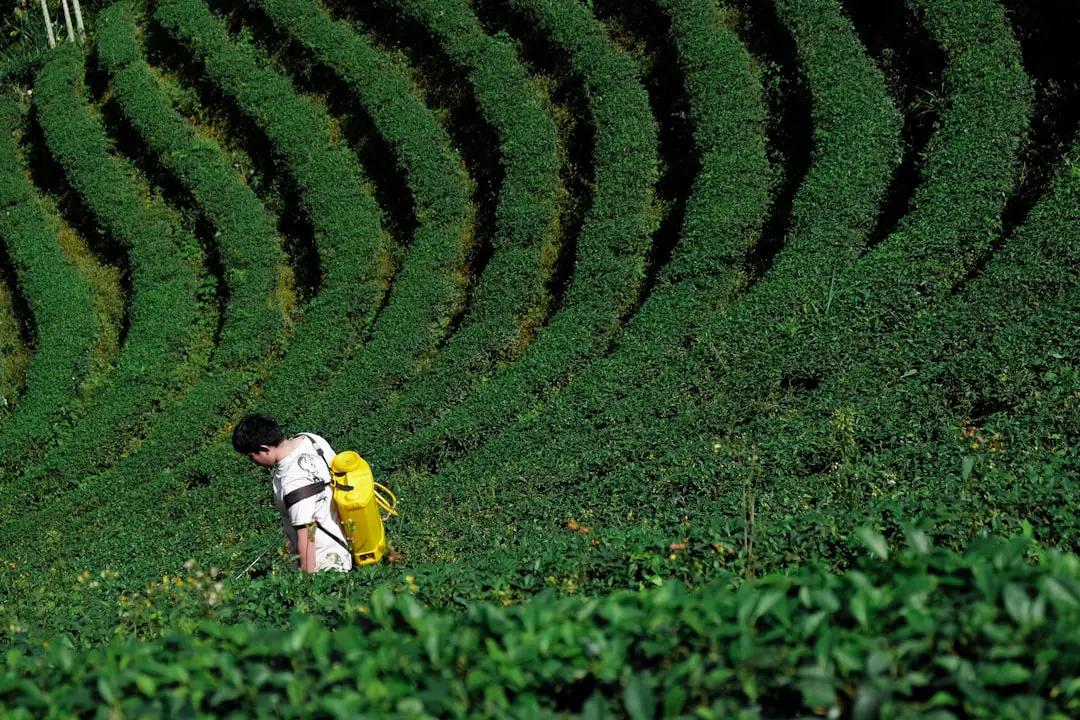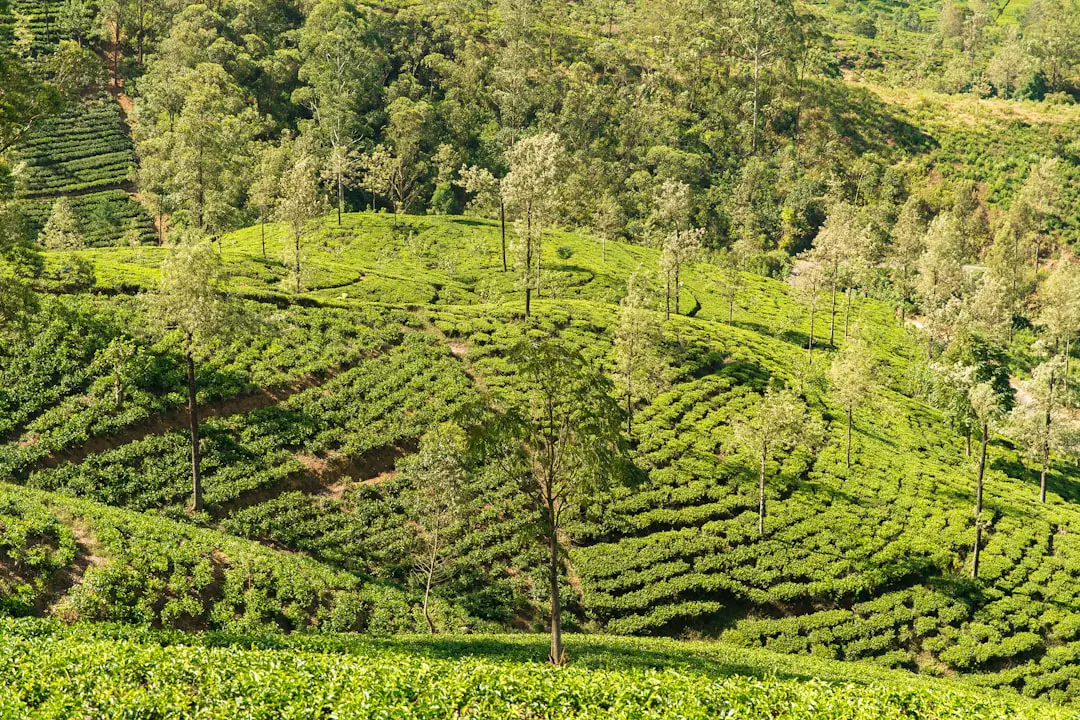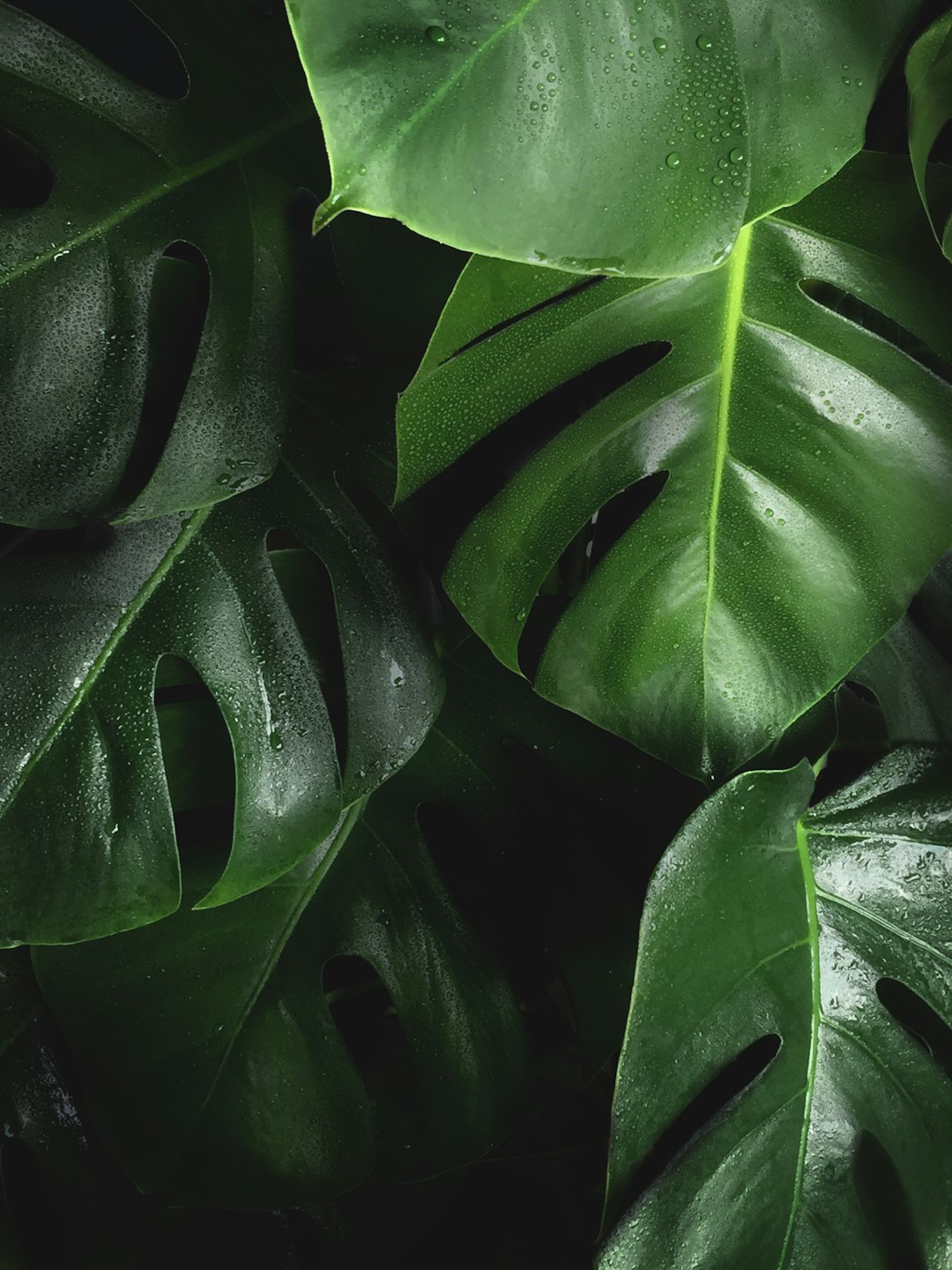Support our educational content for free when you purchase through links on our site. Learn more
What Zones Can You Grow Tea? [2024] 🍵

Quick Answer: Tea plants can be grown in Zones 7-9 outdoors, in sheltered areas in Zones 6 and 10, and in greenhouses in colder zones.
Have you ever dreamed of cultivating your own tea? Imagine sipping a cup of freshly brewed tea made from leaves you grew in your own garden. It’s a truly rewarding experience! But before you embark on this tea-growing adventure, you might be wondering, “What zones can you grow tea?” Well, you’ve come to the right place! In this article, we’ll explore the different zones where tea can be grown, provide you with quick tips and facts, and answer some frequently asked questions. So, let’s dive in and discover the wonderful world of tea cultivation!
Table of Contents
- Quick Answer
- Quick Tips and Facts
- Background: The History of Tea Cultivation
- Choosing the Right Zone for Tea Cultivation
- Understanding Tea Plant Hardiness
- Creating the Ideal Growing Conditions
- Harvesting and Processing Tea Leaves
- Other Benefits of Growing Tea
- FAQ
- Conclusion
- Recommended Links
- Reference Links
Quick Answer
Tea plants can be grown in the following zones:
- Outdoors: Zones 7-9
- Sheltered areas: Zones 6 and 10
- Greenhouses: Colder zones
Now that you have a quick answer, let’s explore some quick tips and facts about growing tea.
Quick Tips and Facts
- Tea plants (Camellia sinensis) are evergreen shrubs that thrive in heat and are drought-tolerant.
- They produce beautiful white tea flowers, with some varieties even having pink-colored flowers.
- Tea plants have a pleasant, expensive perfume-like scent.
- The best quality tea leaves are harvested from the first flush, which refers to the first leaves in spring.
- Tea plants are excellent seed producers, making propagation relatively easy.
- They can be espaliered, meaning they can be pruned and trained into shapes and patterns.
- Tea plants are suitable for containers, landscapes, screens, hedges, and even foundation plantings.
Now that you have a taste of what tea plants have to offer, let’s delve into the background and history of tea cultivation.
Background: The History of Tea Cultivation

Tea has a rich and fascinating history that dates back thousands of years. It originated in ancient China and gradually spread to other parts of the world. The cultivation of tea plants, also known as Camellia sinensis, played a crucial role in the development of tea as a popular beverage.
Tea cultivation involves growing tea plants in specific regions that provide the ideal conditions for their growth. These conditions include the right climate, soil, and altitude. Different tea varieties thrive in different environments, resulting in the diverse range of teas we enjoy today.
Now that we have a bit of background knowledge, let’s explore the different zones where tea can be grown.
Choosing the Right Zone for Tea Cultivation
Tea plants have specific climate requirements for optimal growth. They prefer regions with a mild climate, where temperatures don’t drop too low or rise too high. The United States Department of Agriculture (USDA) has divided the country into different hardiness zones based on average annual minimum temperatures. These zones help gardeners determine which plants are most likely to thrive in their area.
Here are the zones where tea can be grown:
-
Outdoors: Zones 7-9 ✅
Tea plants can be grown outdoors in Zones 7-9, which include regions with mild winters and warm summers. These zones provide the ideal conditions for tea plants to flourish. If you live in one of these zones, you have the opportunity to cultivate tea plants in your garden and enjoy the satisfaction of growing your own tea leaves. -
Sheltered areas: Zones 6 and 10 ✅
In Zones 6 and 10, tea plants can still be grown outdoors, but they may require some additional protection. These zones have slightly colder or hotter temperatures compared to Zones 7-9. However, with proper care and attention, tea plants can thrive in sheltered areas within these zones. -
Greenhouses: Colder zones ✅
If you live in a colder zone where tea plants may not survive outdoors, don’t worry! You can still grow tea by creating a suitable environment in a greenhouse. Greenhouses provide the necessary warmth and protection for tea plants to thrive, even in colder climates.
Now that you know which zones are suitable for tea cultivation, let’s explore the concept of tea plant hardiness.
Understanding Tea Plant Hardiness
Tea plants have a specific hardiness range, which refers to their ability to withstand different temperature extremes. Understanding tea plant hardiness is crucial for successful cultivation. Let’s take a closer look at the hardiness of tea plants:
-
Minimum Temperature Tolerance ❄️
Tea plants can tolerate a minimum temperature range of approximately 0°F to 10°F (-18°C to -12°C). However, prolonged exposure to temperatures below freezing can damage or kill the plants. Therefore, it’s important to protect tea plants from extreme cold, especially in colder zones. -
Optimal Temperature Range ☀️
Tea plants thrive in temperatures ranging from 65°F to 85°F (18°C to 29°C). These temperatures provide the ideal conditions for growth and development. In regions with temperatures outside this range, additional care and protection may be necessary.
Now that we understand the hardiness of tea plants, let’s explore how to create the ideal growing conditions for them.
Creating the Ideal Growing Conditions
Tea plants have specific requirements when it comes to soil, sunlight, and water. Creating the ideal growing conditions will ensure that your tea plants thrive and produce high-quality leaves. Here are some key factors to consider:
-
Soil 🌱
Tea plants prefer well-draining soil that is rich in organic matter. The soil should have an acidic pH level between 5.5 and 6.5. If your soil is not naturally acidic, you can amend it with organic matter and additives to achieve the desired pH level. -
Sunlight ☀️
Tea plants require full sun or partial shade to grow and thrive. They need at least 4-6 hours of direct sunlight each day. If you live in a hotter climate, providing some afternoon shade can help protect the plants from excessive heat. -
Water 💧
Tea plants need regular watering, especially during periods of active growth and blooming. They prefer moist soil but not waterlogged conditions. It’s important to water the plants consistently, ensuring that the soil remains evenly moist.
By providing the right soil, sunlight, and water conditions, you’ll create an environment where your tea plants can flourish. Now, let’s move on to the exciting part: harvesting and processing tea leaves!
Harvesting and Processing Tea Leaves
Harvesting tea leaves is a delicate process that requires careful timing and attention to detail. The quality of the leaves greatly influences the flavor and aroma of the final tea product. Here are some key points to keep in mind:
-
First Flush 🌿
The first flush refers to the first leaves that emerge in spring. These leaves are considered the highest quality and are often used to produce premium teas. It’s best to harvest the leaves while the plant is actively growing and producing new foliage. -
Timing ⏰
The timing of the harvest depends on the specific tea variety and the desired flavor profile. Some tea growers recommend waiting until the third year to harvest leaves, allowing the plants to establish a strong root system. However, it’s essential to research the specific requirements of the tea variety you’re growing. -
Processing 🍃
After harvesting the tea leaves, they need to be processed to transform them into the final tea product. The processing methods vary depending on the type of tea you want to produce, whether it’s green tea, black tea, oolong tea, or white tea. Each type requires specific steps to achieve the desired flavor and characteristics.
Now that you have a better understanding of the tea cultivation process, let’s explore some additional benefits of growing tea.
Other Benefits of Growing Tea
Growing tea offers more than just the satisfaction of cultivating your own beverage. Here are some additional benefits of growing tea plants:
-
Health Benefits 🌿
Tea is known for its numerous health benefits, including antioxidant properties, potential weight management support, and potential cardiovascular health benefits. By growing your own tea, you have control over the cultivation process and can ensure the highest quality leaves for your brew. -
Sustainable and Eco-Friendly ♻️
Growing your own tea promotes sustainability and reduces your carbon footprint. You can avoid the environmental impact associated with commercial tea production, such as transportation and packaging waste. -
Gardening Enjoyment 🌱
Cultivating tea plants can be a rewarding and enjoyable gardening experience. It allows you to connect with nature, learn about the intricacies of tea cultivation, and enjoy the beauty of tea flowers and foliage in your garden.
Now that we’ve covered the benefits of growing tea, let’s move on to the frequently asked questions section.
FAQ

Where can tea be grown in the US?
Tea can be grown in the United States in regions that provide the right climate and growing conditions. The suitable zones for tea cultivation in the US are Zones 6-9, with some variations depending on the specific tea variety.
Read more about “Is There Any Tea Grown in the United States? … 🍵”
What climate zone do tea plants grow in?
Tea plants grow in climate zones that provide mild winters and warm summers. The ideal zones for tea cultivation are Zones 7-9, where tea plants can be grown outdoors without additional protection.
Read more about “Tea Climate and Soil: Cultivating the Perfect Cup … ☕️”
What climates does tea grow in?
Tea plants thrive in climates with moderate temperatures and high humidity. They prefer regions with an average annual temperature range of 65°F to 85°F (18°C to 29°C). Tea plants can tolerate some variations in temperature, but extreme cold or heat can be detrimental to their growth.
Read more about “Where Do Tea Plants Grow? …”
How cold can tea plants survive?
Tea plants can tolerate temperatures as low as 0°F to 10°F (-18°C to -12°C) for short periods. Prolonged exposure to freezing temperatures can damage or kill the plants. It’s important to protect tea plants from extreme cold, especially in colder zones.
If you have any more questions about growing tea, feel free to reach out to us. We’re here to help you on your tea-growing journey!
Conclusion

Congratulations! You now have a comprehensive understanding of the zones where tea can be grown. Whether you live in Zones 7-9 and can grow tea outdoors or need to create a suitable environment in a greenhouse, you have the opportunity to cultivate your own tea leaves. By providing the right growing conditions, harvesting at the right time, and processing the leaves, you can enjoy the satisfaction of brewing tea made from your very own garden.
So, why not embark on this tea-growing adventure? Start by choosing the right tea variety for your climate zone, prepare the ideal growing conditions, and watch your tea plants thrive. Before you know it, you’ll be sipping a cup of tea that you cultivated with love and care.
If you’re ready to start your tea-growing journey, check out our recommended links below for further reading and resources. Happy tea cultivation!
Recommended Links
- Green Tea Cultivation
- Herbal Tea Planting
- Tea Plant Varieties
- Soil and Climate for Tea
- Tea Market Trends
- Is There Any Tea Grown in the United States? 2024 🍷
Reference Links
- Grow Black Tea in Your Garden – FineGardening
- [Additional keyword-related sites]
Remember, the joy of growing your own tea extends beyond the final cup. It’s a journey of discovery, connection with nature, and the satisfaction of nurturing a plant from seed to harvest. So, why not start growing your own tea today? Cheers to your tea-growing adventure! 🍵



